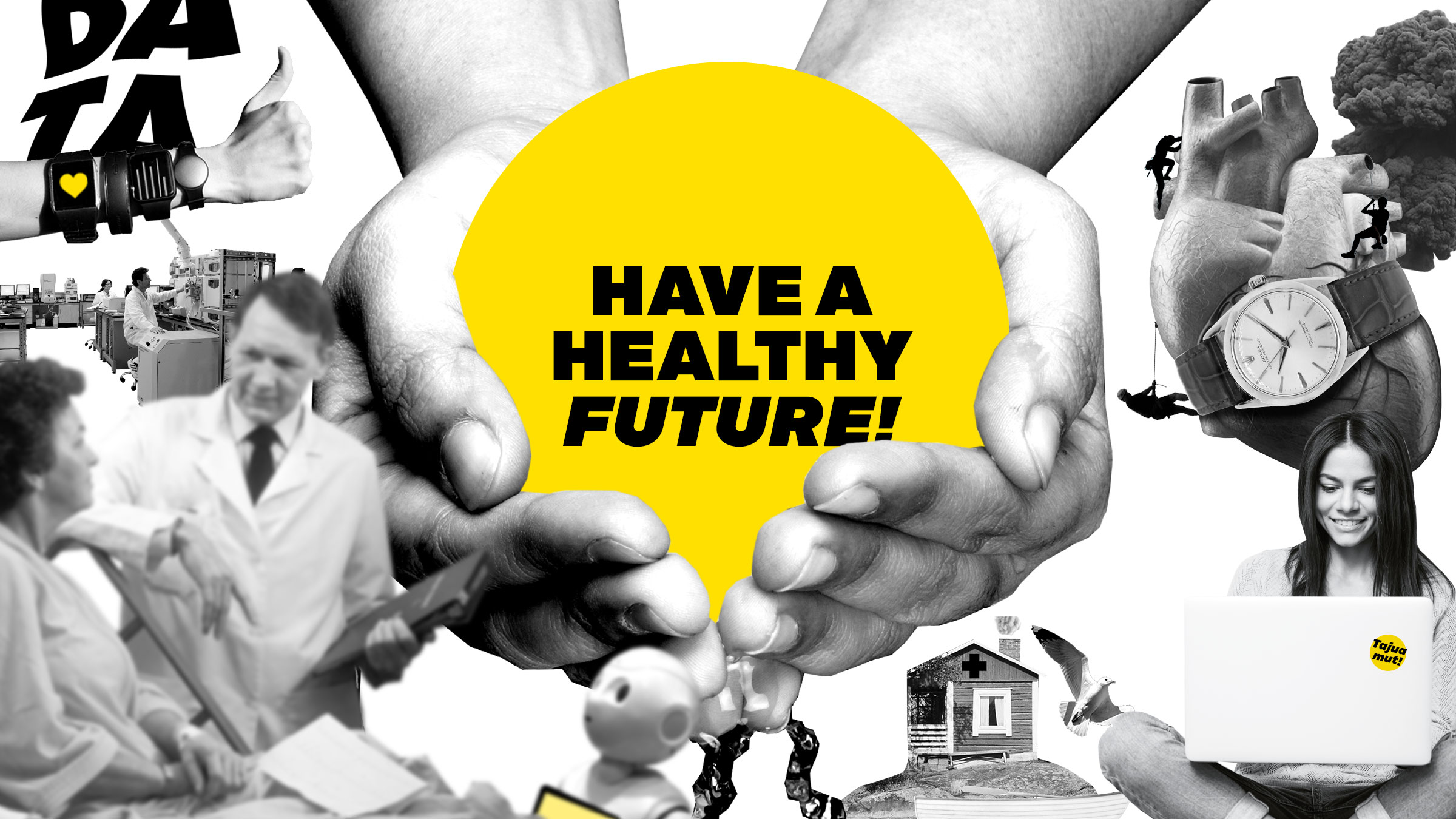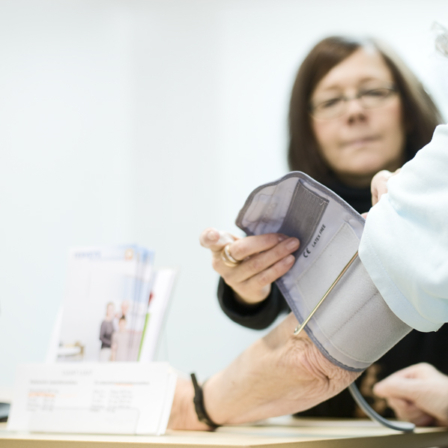Attitudes have been a major obstacle to the deployment of customer-oriented service models in social welfare and healthcare. However, they have begun to change rapidly, which is a good thing, as a genuinely customer-oriented service system supports the empowerment of people as experts in caring for their own health and in the treatment of diseases.
The better people manage and treat their diseases, the less need there is for support by healthcare professionals. Healthcare should therefore identify the customers who can cope by themselves and focus professional resources on customers who need support and guidance.
Attitudes and structures that have become established over years and decades readily make up self-strengthening mindsets that should be stirred every once in a while, in the name of promoting the capacity for reform.
Below, you can find five examples of social welfare and healthcare myths we have compiled and stories of how projects accelerated by Sitra have aimed to break them in recent years.
Myth #1: “It is impossible to intervene in young people’s problems in time”
Too many decision-makers are discouraged and think that there will always be marginalised people and there isn’t actually anything you can do about it. There has been little action to prevent marginalisation.
A long time ago, children and young people were raised by an entire village. Everyone knew whose children were rascals, and whose were the reclusive types. There was a role for everyone in the community. But societies have changed and marginalisation has become easier for many reasons.
There is no established definition of marginalisation. It happens when disadvantages are accumulated and diversified and begin to affect people’s chances of having control over their lives.
A low level of education, unemployment and subsistence issues are risk factors for the marginalisation of young people. In addition, marginalisation is influenced by problems relating to life management and health, lack of social relationships and marginalisation from societal engagement.
“The authorities being in silos is a major problem.”
Even though there is an enormous volume of data in different information systems, society does not detect young people at risk of marginalisation in time. They disappear somewhere, and young people’s problems are exacerbated before anyone actually begins to help them.
If young people are marginalised, helping is difficult. It requires strenuous action to mature them into “good citizens” from society’s point of view, paying their taxes, living cleanly and perhaps having children.
It is irresponsible to think that young people’s problems cannot be addressed in time. If anything, they should be addressed at an early stage, focusing resources on helping those at risk of marginalisation. Outreach youth work can be effective in finding them. Better use of information networks and data also helps to identify young people in need of help.
The traditional mindset is that people must not be helped against their own will. If they want to be marginalised, they cannot be prevented from doing so; one has to wait until they want to be helped. In the case of young people, this isn’t acceptable.
The authorities being in silos is a major problem. Young people need a safety net around them involving everyone. As the authorities change their activities, parenthood also needs to be redefined. It is parents, not school, for example, who have the primary responsibility for children and young people.
Sitra has begun to solve the problem of marginalisation with the Get me! project. Get me! is an operating model in which a local authority’s outreach youth work unit functions as a node and builds a safety net around young people.
The main aim has been to offer young people holistic guidance and advice before the problems accumulate. Nowadays, there are 13 Get me! municipal projects in Finland.
Myth #2: “It does not pay to develop before something happens”
Naturally, it pays to develop healthcare at all times – and it is also a must. If nothing is done, the consequences are bleak: access to treatment becomes even more difficult and the nation becomes more unwell. At the same time, the costs increase.
It is pointless to expect the problems to disappear by themselves or even that the social welfare and healthcare reform will resolve them all. Waiting will only exacerbate the situation. This has already been seen.
Underlying the problems is the huge repair deficit that has emerged in public-sector primary care over the years.
Specialist medical care has been developed, but not the service experience and access to treatment in primary care. This has resulted in a situation in which the care experience in the public sector, and in specialised medical care in particular, is good, but only if one happens to get access to it.
This should not be the case, as customer orientation is a key objective of health policy. The patient’s active role should be taken into consideration. The focus of healthcare has shifted to the management of chronic diseases and their risk factors.
“The customer experience originates from the customer and their needs. It emerges as the result of several encounters face to face, online and by telephone.”
People’s expectations have changed and knowledge has increased. In addition, freedom of choice is expanding, electronic services are becoming more common and the responsibility of the individual for questions concerning health and well-being is increasing. All of this emphasises the position of the customer in social welfare and healthcare.
The customer experience originates from the customer and their needs. It emerges as the result of several encounters face to face, online and by telephone. Everything has an effect on how the customer perceives healthcare on the whole.
Sitra is involved in developing health centres. The launch of the Huomisen terveyskeskus (“Tomorrow’s health centre”) coaching league connects municipal health centres to regional coaching programmes. The aim is to help health centres to promote customer-oriented and competitive activities.
The project initially involves five counties and a total of 25 health centres, but could extend to more than a hundred primary care points. This would account for more than one fifth of the 500 primary care locations in Finland.
The reforms should be started right away. The sooner the work is started, the healthier people remain, and that benefits everyone.
Myth #3: “The low-threshold service model results in unnecessary healthcare encounters”
Just slightly over a decade ago, many healthcare professionals and decision-makers thought like this: if access to a healthcare unit is easy, people go there for the fun of it.
An appointment must be scheduled at the health centre, and in most cases, it also pays to charge a fee for the visit to avoid unnecessary visits.
The waiting times at health centres had increased to months. Many patients became severely ill before they got treatment. Finally, the government imposed sanctions on local authorities to ensure access to treatment and shorten the queues.
“The Health Kiosk was one of the first projects with which Sitra began to tackle the challenge of access to treatment.”
Small and remote municipalities in particular suffered from a shortage of doctors and patched the situation up with locums. At the same time, occupational healthcare flourished. This put Finns in unequal positions: the employed had immediate access to care, while the unemployed and elderly, for example, had to wait in primary care.
Private health insurance policies also began to increase. Many parents, for example, began to take out insurance for their children so that they could go to a private surgery if necessary.
The Health Kiosk was one of the first projects with which Sitra began to tackle the challenge of access to treatment. The objective was to offer quick access to healthcare services.
This was easier said than done: the resistance was tangible. Many GPs thought that the demand for health services was infinite, so access to them could not be free.
In spite of the sceptics and their objections, the first Health Kiosk began to offer nursing services in a new kind of environment at the Elo shopping centre in Ylöjärvi in summer 2009, and the worst predictions did not come true.
There was a queue at the kiosk at times, but it remained moderate. The majority of people did not go there all the time to seek help; most came with a need.
The mindset has changed subsequently, but in practice, a lot remains to be done. The queues for primary care are still long in many areas.
Strictly defined, low-threshold services aim to reach out to customers who have remained outside the service system. As the name suggests, the aim is for the threshold for seeking services to be as low as possible. The aim is for problems not to accumulate.
In the future, new technological solutions will lower the threshold of access to care. In addition, models that make it easier to maintain health and prevent disease will emerge.
Myth #4: “Only professionals should have the right to use health information”
Electronic services have revolutionised the world so that the idea of exclusive rights to information has become obsolete. Nobody can have exclusive rights to health information any more.
Everyone should have access to information about themselves at the very least and a view as to what should be done with that information.
The world has changed enormously and quickly with regard to information management.
“All of these things that seem mundane today would have seemed outright utopian just a few decades ago.”
People are increasingly interested in their health and well-being. Everybody searches the internet for information about diseases and their symptoms. There are lots of sources: sites provided by the authorities, blogs, vlogs, discussion forums, official-looking sites and advertisements.
The internet has become an important source of health-related information. In addition to information, people with diseases also obtain peer support through it.
All of these things that seem mundane today would have seemed outright utopian just a few decades ago.
However, the challenge for ordinary people today is to see the difference between trustworthy information and nonsense. By using Google, one easily ends up reading instructions with no scientific basis and by following them one can ruin one’s health.
Therefore, sharing reliable sources and trustworthy information has become increasingly important. Sitra and the Finnish Medical Society Duodecim set out to tackle this problem by building the Terveyskirjasto online health library that can be accessed by everyone.
The change was a major one, as medical information was strictly in the hands of doctors before.
The idea is that it is easier for a person to assume responsibility for their own health if they have adequate trustworthy information available to them.
When information becomes more open, the role of healthcare also changes. People can already access their health information via the My Kanta service maintained by Kela. The next step is that they will be able to add data collected by them about their own health to the data file.
If used properly, it will lead to more holistic care and facilitate both maintaining health and preventing diseases.
Myth #5: “Older people can’t or won’t take responsibility for their lives”
People live longer. However, this does not mean increasingly passive people with increasingly poor health, but people who remain functionally capable longer than before.
Ageing therefore no longer means just giving up.
The majority of elderly people want to bear responsibility for themselves and act independently for as long as possible. Few want to just rest and wait for death after retiring.
The elderly are not a coherent group. They are a group of people with different situations in life, ranging from those aged 63 to those aged 100. The majority of them are healthy. Yet they need diverse services more frequently than the rest of the population, as functional capacity and needs change with age.
“The elderly are not a coherent group.”
Active ageing means longer careers, increasing activity in retirement and creating a healthy life and safe living environment. It is also cost-efficient: people can lead their lives so that they cope with little assistance even when old. Society’s goal is for people to live independently at home for as long as possible and for the time in institutional care to be as short as possible.
Sitra’s Palvelutori project has been one way of increasing the influence of ageing people over their lives. The model is based on the challenges to services for the elderly faced by the City of Tampere and the solutions developed in order to reorganise services.
Palvelutori connects services, operators and customers. It functions as a channel to all services that assist the ageing person to live in their own home. The aim has been to increase customer orientation and customer understanding.





Read more